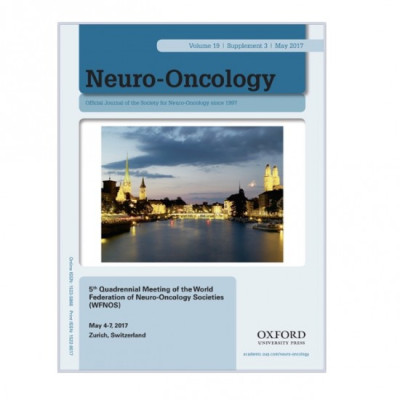Publication
Novel geometrical imaging biomarkers predict survival and allow for patient selection for surgery in glioblastoma patients
J. Pérez-Beteta, D. Molina, A. Martínez-González, E. Arregui, B. Asenjo, L. Iglesias, J. Martino, L. Pérez-Romasanta, E. Arana, V.M. Pérez-García
Neuro-Oncology 19(3):iii80-iii80 (2017)
MOLAB authors
Abstract
Introduction: Glioblastoma is the most frequent and lethal malignant brain tumor in adults. Preoperative magnetic resonance imaging is routinely used for diagnosis and treatment planning. One of the gold standards in imaging are the post-contrast T1-weighted magnetic resonance images (MRIs) that are used to define the macroscopic part of the tumor. A modern mathematical model has predicted a relation between tumor’s growth speed, and so the patient outcome, with the width of contrast enhancing areas measured on the pre-surgery post-contrast 3D T1-weighted images. Other works have hypothesized the role of the tumor’s surface as a driver for growth and infiltration in cancer. Materials and Methods: A retrospective study involving 7 hospitals was organized for the validation of the model predictions. Inclusion criteria where unifocal tumors and availability of 3D T1w MRIs and clinical data (age, survival, type of treatment, etc). 219 patients were included in the study. Tumors were manually segmented and thirty quantitative geometrical 3D variables computed including volumes (total tumor, contrast enhancing and necrotic), surfaces, volume ratios, 3D maximal diameter and several measures of the contrast enhancing ‘rim’. A novel measure was defined accounting for how much the tumor surface as measured on the post-contrast T1w MRIs deviates from a sphere of the same volume. Kaplan-Meir and Cox regression methods were used to validate the relevance of the different features. Results: Patients with small contrast enhancing width (< 3.7?mm) showed a significant improvement in survival (p = 0.002, differences in median = 191 days, HR = 1.701). The tumor surface irregularity turned out to be a very powerful predictor of survival (p = 0.004, differences in median = 104 days, HR = 1.516). Both parameters were significant in multivariate analysis together with the age (p = 0.007 for surface irregularity and p = 0.009 for rim width). No other parameters including volumes, volume ratios, surfaces, maximal diameters, and other features were associated with survival neither in univariate nor in multivariate analyses. Conclusions: The width of the contrast enhancing rim and a novel surface irregularity parameter were predictors of survival in a large cohort of GBM patients. Since the study methodology was very robust (high resolution MRIs, tumor segmentation methodology) and the number of geometrically meaningful parameters large in comparison with previous studies this study may shed some light on the long debated topic of the role of geometrical measures on GBM patient’s survival.
FUNDING: James S. Mc. Donnell Foundation (USA) 21st Century Science Initiative in Mathematical and Complex Systems Approaches for Brain Cancer [Collaborative award 220020450 and planning grant 220020420], MINECO/FEDER [MTM2015-71200-R], JCCM [PEII-2014-031-P].















